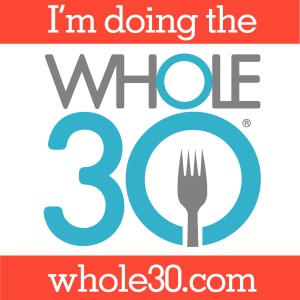What are Nightshades? You may have heard of the term “deadly nightshade” referring to a plant called belladonna, which was used as a poison in ancient times. Lesser known are the commonly eaten vegetables in the same nightshade family. They aren’t deadly, but they contain enough toxins to cause inflammation in some people, particularly those with leaky gut or autoimmune disease. Often, we don’t realize just how much, until we stop eating them. Here’s the list:
• Tomatoes (yep!) sad face 😦
• Tomatillos
• Potatoes (these also contain sulfites, a big NO NO)
• Eggplants
• Peppers (bell peppers, banana peppers, chili peppers, etc.)
• Pimentos
• Goji berries
• Ground cherries
• Ashwagandha (an ayurvedic herb)
• Tobacco (thank goodness I quit smoking in 2003)
• And red pepper seasonings (paprika, chili powder, cayenne, curry, etc.)
• Read labels: terms like “spices” and “natural flavors” often contain the above seasonings.
• Similar sounding foods that are NOT nightshades: Sweet Potatoes and Peppercorns <–these are OK
How Are They Harmful? First of all, nightshades aren’t harmful to everyone, but they are harmful to some of us. Why? They contain toxic compounds called alkaloids. In nature, these protect the plants against insects, by poisoning the insect and dissolving its cell membranes. Unfortunately, alkaloids can have a similar effect in humans, increasing our inflammation, over-activating our immune system, and causing permeability in our intestinal membranes (known as leaky gut.) If someone’s healthy, with low inflammation in their body, a balanced immune system, and a healthy and strong digestive tract, they can often eat nightshade vegetables without a problem. However, if you have health issues, particularly if you have autoimmune disease, nightshades are a common food trigger which can make your symptoms worse…
Some Advice
• If you’re craving potatoes, replace them with a starchy alternative: sweet potatoes, beets, parsnips, butternut squash. You can cook all of these the same way you cook potatoes: fries, chips, roasted, mashed, and you know what? They have more flavor, too!
• Although there’s really no substitute for a fresh summer tomato, there IS a substitute for a classic tomato sauce, thanks to Danielle from Against All Grain. Who’d of thunk….beets. Interesting. Gotta try this!
TomatoLess Meat Sauce – Yes!!! 🙂
Ingredients:
- 2 tablespoons bacon fat
- 2 tablespoons extra virgin olive oil
- 2 cups carrots, peeled and diced
- 2 cups beets, peeled and diced
- 1 cup yellow onion, peeled and diced
- 1 celery stalk, chopped
- 5 garlic cloves, minced
- 3 pieces of bacon, chopped
- 1½ teaspoons sea salt
- ¼ teaspoon fresh cracked pepper
- 1 1/4 cup chicken stock (or chicken bone broth)
- 2 bay leaves
- 1 tablespoon fresh basil, chopped
- 1½ teaspoon dried oregano
- ½ teaspoon dried thyme
- 1 tablespoon apple cider vinegar
- 1 pound ground beef or pork (I used grassfed 85/15 beef)
Instructions:
- Melt the bacon fat with the olive oil in a sauce pan set over medium-high heat. Sauté the onions and garlic for 3-4 minutes. Add the bacon and cook for another 2-3 minutes, until the onions are translucent.
- Add the carrots, beets, and celery and cook until the vegetables have softened slightly, about 5-6 minutes.
- Pour in the stock/bone broth and bring to a boil. Reduce heat to medium-low and simmer for 10 minutes.
- Carefully pour the sauce into a blender and blend on low for 15 seconds, then increase the speed to high and continue to blend until you have a smooth sauce.
- *Be careful when blending hot liquids as they have the tendency to splatter. You can also use an immersion blender in the pot.
- Return the sauce to the pan. Add the bay leaves, basil, oregano, thyme, and vinegar. Bring to a simmer then crumble the ground meat with your hands and add it to the sauce. Cook over medium heat for 30 minutes, until the meat is fully cooked.
- *The thickness of the sauce will depend on what the fat content of your meat is. If it is too thick, add a little more stock towards the end of the cooking process until it has reached your desired thickness. YUM!
• Nightshade spices usually give food a hot kick. You can still get this sensation through non-nightshade spices: white pepper, black pepper, ginger and horseradish. Usually you’ll need more of these spices than you would of the red peppers. Experiment.
• Restaurants are tricky. Many sauces and spice blends contain nightshade spices. You have two options: ask your waiter how the food is seasoned (and trust them to tell you the truth). Or order your food unseasoned and bring some spices with you.
Here is a Nightshade-Free Curry recipe, just mix and store in a jar:
- 2 Tbsp. ground coriander
- 2 Tbsp. ground cumin
- 4 tsp. turmeric
- 2 tsp. black pepper
- 1 tsp. dried ginger
- 1 tsp. dry mustard
